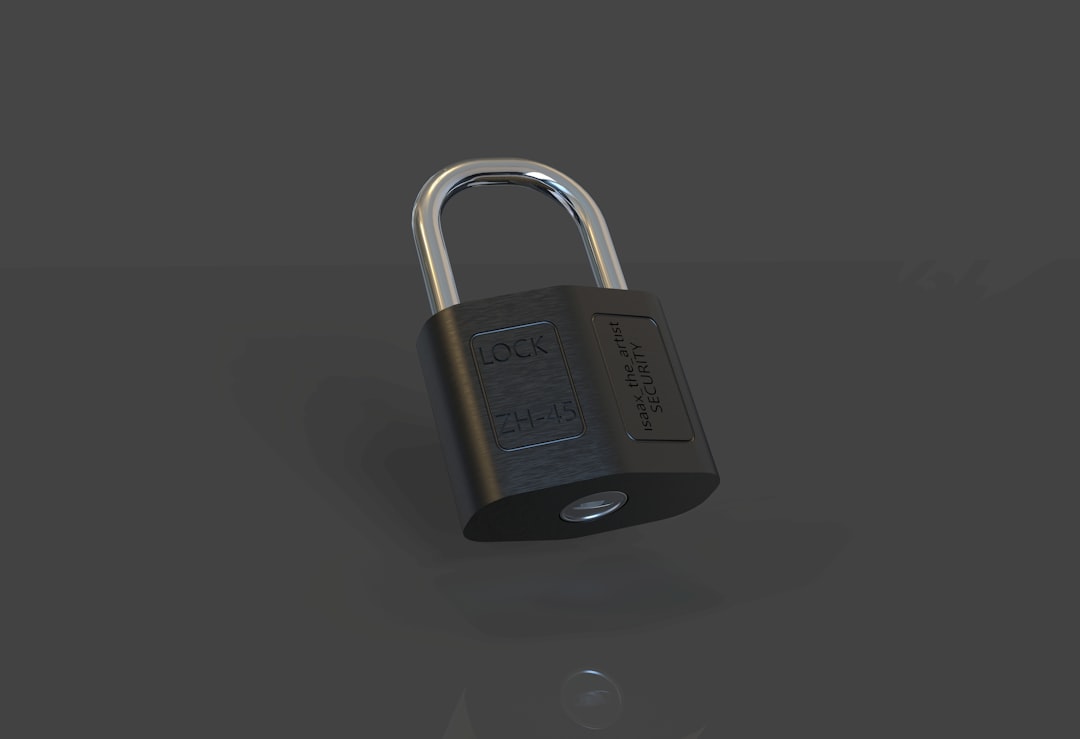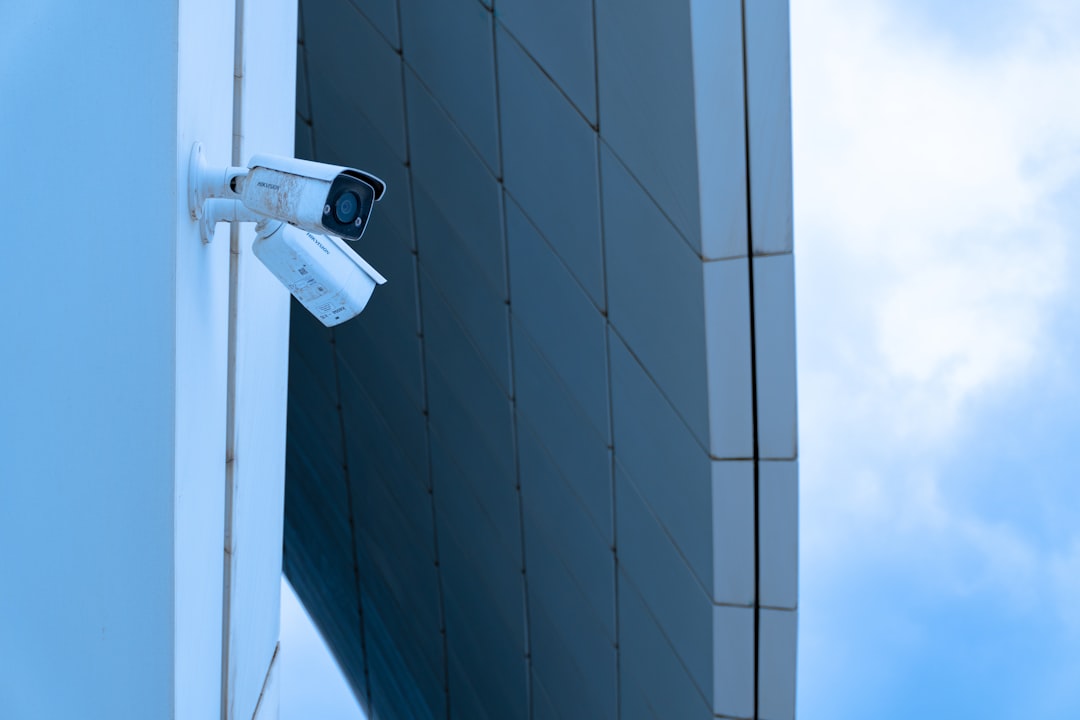

Engage prospects with a scan and streamline customer engagement with FREE QR code marketing tools by Sona – no strings attached!
Create a Free QR CodeFree consultation

No commitment

Engage prospects with a scan and streamline customer engagement with FREE QR code marketing tools by Sona – no strings attached!
Create a Free QR CodeFree consultation

No commitment
In a rapidly evolving security landscape, the need for seamless, secure, and user-friendly access systems has become paramount for security equipment providers. Traditional methods like physical keys, access cards, and manual sign-ins often introduce friction and operational inefficiencies, not only causing user frustration but increasing the risk of missing high-value visitors or assets that slip through untracked. This results in slower throughput at entry points, inconsistent audit trails, and lost opportunities to learn from real-world engagement.
QR codes offer a practical and innovative solution, enabling contactless, app-free, and trackable access across a variety of security scenarios. By digitizing these touchpoints, organizations reduce operational bottlenecks, ensure quick onboarding of visitors and staff, and gain much-needed transparency around who is entering or using equipment. This reduces missed opportunities due to lack of visibility into anonymous traffic or incomplete records, and it gives teams the confidence to meet compliance standards more easily.
By integrating QR codes into existing infrastructure, security equipment providers unlock measurable benefits such as swift identity verification, audit-ready access logs that capture every interaction, and automated alerts around unreturned equipment or unauthorized attempts. This also improves user experiences and operational outcomes. The following guide outlines practical strategies to deploy QR codes for secure, streamlined access control and demonstrates how modern platforms like Sona QR and Sona make it easier to surface engagement signals and trigger timely follow-ups tied to revenue.

Many security equipment providers face the frustration of lost or incomplete visitor data because prospects and users enter and leave without traceable logs. Previously, reliance on paper sign-ins, badges, or manual check-out forms led to missed opportunities and compliance gaps. Converting these analog actions into QR-initiated flows removes friction for users while automatically creating the data needed for security, operations, and sales.
A structured approach works best. Start by identifying exactly where delays and blind spots occur, then apply QR codes in ways that streamline the process for users but also capture the context your team needs. Consistent visual design and clear calls to action move scanners to the right destination while role-based permissions safeguard sensitive areas and assets.
Modern management solutions enable centralized deployment and optimization of all codes, reducing administrative overhead and unifying the physical-to-digital journey. When each scan becomes a traceable, configurable event, potentially high-value prospects do not remain anonymous and high-risk behaviors can be spotted in real time.

A key pain point in the security sector is the disconnect between physical presence and digital visibility, leaving many potential leads and risks invisible to both sales and compliance teams. Prospects or contractors may interact with access points or demo environments, but without a submitted form or explicit check-in, they are not recognized by CRM systems. Paper records, if used at all, are slow to process and rarely integrated with digital tools.
QR codes close this gap by turning every physical interaction into a digital action that can be tracked, secured, and improved. They lower the barrier for engagement because scanning requires only a smartphone camera, and they are flexible enough to support everything from visitor self-registration to time-limited access credentials for remote doors and tool cages.
For many providers, the shift to QR-based access converts formerly invisible or missed interactions into actionable engagement data. This unlocks timely follow-up for warm prospects, shortens cycle times, and strengthens compliance through complete, searchable access histories.

Security operations often struggle with static, disconnected credentials, leading to wasted spend on reprints and risks tied to out-of-date access rights. When badges are lost or paper logs are incomplete, doors remain susceptible to misuse and valuable equipment can disappear without a trace. Choosing the right QR code format for the job solves these problems while reducing cost and complexity.
Different formats suit different access workflows and visitor journeys. Selecting a mix of dynamic and static codes lets you balance flexibility and simplicity, with dynamic formats favored for any use case that requires tracking, revocation, or post-scan automation.
With Sona QR, operations teams can generate and manage all of these formats in one dashboard. Dynamic controls, branded designs, and granular analytics come standard, allowing you to edit destinations, revoke access, and attribute outcomes to scans without swapping physical labels or signage.
Security equipment providers often miss out on growth when traffic at physical locations goes untracked or lacks clear follow-up mechanisms. High-intent contacts may enter a facility, borrow tools, or test systems, but if their journey stops there, countless upsell and relationship opportunities are lost. Turning these touchpoints into measurable digital events creates visibility and opens the door to well-timed outreach.
Look for any place where people or assets change hands and where a small amount of friction routinely occurs. Visitors who park in a designated area, technicians who collect parts from a cage, or integrators who access a demo lab all produce moments that should inform future conversations and revenue plans.
Companies that apply these tactics consistently gain a clear picture of engagement across locations and roles. The data informs staffing, inventory, and sales priorities, while automated journeys ensure high-intent users receive relevant information at the right time.

Unconverted demo interest and hidden engagement signals have long been a challenge in this industry. Organizations may offer tours or product demos, but when guests do not formally check in, there is no way to follow up or validate engagement. QR codes turn these ambiguous interactions into measurable actions that tie back to identity, role, and outcome.
By mapping common customer interactions to specific QR-enabled workflows, providers can streamline operations and capture signals that were previously lost. The key is to choose placements that align with user intent and to design the post-scan experience around a single next step.
Each of these use cases replaces a slow or opaque process with a fast and auditable one. Over time, the accumulated data shows where to invest, which users to cultivate, and which risks to address proactively.
A recurring headache in security operations is a lack of actionable intent signals when visitors or users opt out of traditional forms. Prospective buyers often engage in physical spaces yet remain unknown to sales and marketing teams. QR scans supply the missing context so you can segment audiences and respond based on real behavior rather than guesswork.
Each scan captures a combination of who, where, and when. With the right tagging strategy and a platform like Sona QR, you can turn that data into targeted follow-up that aligns with lifecycle stage and role. This is particularly valuable in security, where distinctions between employees, contractors, and visitors carry operational and commercial implications.
With Sona QR, every code becomes a smart entry point into your funnel. The platform enriches scan data with campaign source and device context, enabling precise segmentation and timely, relevant follow-ups that convert interest into measurable outcomes.
Disconnected access and marketing campaigns foster inconsistency, causing prospects to disengage and teams to lose attribution. When real-world interactions are not tied to digital systems, it is difficult to tell which activities change behavior or create revenue. QR codes fix this by serving as connectors across offline and online channels, aligning operations, marketing, and compliance.
The best results come from a coherent strategy where codes are consistently branded, destinations are role aware, and data flows to the systems that need it. This approach creates recognizable experiences for users and scalable insights for your team.
By tying every scan to a unified reporting layer, providers can attribute revenue to previously unmeasurable channels and refine investments accordingly. Sona QR centralizes code creation and performance monitoring, while Sona enriches journeys with multi-touch attribution to tell the full story from first scan to closed deal.
Stepping through QR deployment is vital to ensure no opportunities or signals are missed at high-friction entry points or moments of intent. The following checklist standardizes planning and execution so security teams, operations, and marketing work from the same playbook while minimizing risk.
Think of this as an iterative loop. Start small with a high-impact use case such as visitor registration or tool checkout, gather data, then expand to additional doors, assets, or locations. Each cycle builds confidence, clears bottlenecks, and improves scan rates.
Begin with a workflow that is both visible and frequently used, such as lobby check-in, contractor access at a side entrance, or radio battery checkout from a tool room. Define the business outcome you want: faster throughput, fewer lost assets, or more qualified leads. Clarify which team owns the workflow and who will act on the resulting data.
Choose between static and dynamic codes based on whether you need tracking, content updates, or revocation. For any security or compliance workflow, dynamic codes are recommended so you can update destinations, enforce expirations, and change permissions without reprinting.
Design impacts scannability and trust. The code should be large enough for the environment, framed with a concise call to action, and branded with a familiar domain so users feel confident scanning. Test across devices and lighting conditions before wide rollout.
Place codes where friction is highest and tampering risk is lowest. For doors, use tamper-evident labels or protected displays. For equipment, place codes on durable surfaces using industrial labels. Train staff on how to use the workflow and what to do when users need assistance.
Launch with analytics in place. Use dashboards such as Sona QR to track scans by time, location, device, and campaign. Compare conversion rates across placements, test alternative CTAs, and refine destinations based on behavior. Schedule regular reviews to decide where to scale next.
By approaching deployment as a living program rather than a one-time project, you preserve momentum and consistently improve user experience, security, and revenue impact. Document wins and share them across teams so adoption grows organically.

In security systems plagued by anonymous traffic and missed engagement signals, robust analytics turn raw scan data into action. Without a unified view, it is difficult to know which doors attract the most visitors, which assets are at highest risk, or which offsite events actually drive pipeline. A best-in-class tracking solution surfaces these insights and connects them to business outcomes.
Sona QR captures detailed scan data such as time, location, device, and source tag. Sona extends that foundation with identity resolution, multi-touch attribution models, and buyer journey analytics. Together, they show how QR interactions influence everything from access compliance to sales pipeline.
Tracking beyond the scan is what proves value. When you connect scans to revenue and risk reduction, QR codes shift from novelty to strategy. The data informs staffing, inventory, and marketing budgets while delivering an audit trail that satisfies compliance requirements.
Many operations stall because tracking is either too generic or too burdensome for field teams. Simple tweaks in QR strategy can close these gaps and ensure every key moment is captured and acted upon. The goal is to keep scans actionable, automated, and aligned to a clear buyer or user journey.
Focus on the media and touchpoints that your teams and customers already use daily. Then add automation that turns scans into next steps without manual effort.
Creative example: Adding a QR code to visitor parking passes turns each arrival into a pre-registered check-in, speeding lobby throughput and capturing a lead automatically. Another example: Codes on high-value equipment cases launch a damage report or quick-start video, reducing support tickets and turning usage into a signal for service plan upsells.
Transitioning to QR-enabled access elevates every surface and interaction to a digital gateway, closing the gap between physical security and business growth. Instead of missing out on high-value prospects, follow-up opportunities, or upsells due to analog processes and incomplete data, providers gain the transparency and response capability needed to reduce friction, improve compliance, and capitalize on every engagement signal throughout the customer journey.
QR codes are more than a shortcut. They are a strategy that helps security equipment providers turn offline interactions into measurable outcomes. With Sona QR and Sona.com, you can manage codes centrally, connect scans to identity and revenue, and scale a program that is secure, adaptable, and analytics driven. Start with one workflow, measure results, then expand with confidence. Start creating QR codes for free.
QR codes have transformed security equipment providers from traditional product suppliers into dynamic access enablers and data-driven service partners. By integrating QR codes into your security solutions, you not only streamline authorized entry but also enhance monitoring, maintenance, and customer interactions—turning every scan into a secure, actionable event. Imagine instantly verifying user credentials, tracking equipment usage, and updating access permissions without cumbersome manual processes.
With Sona QR, you gain the power to create dynamic, trackable QR codes that adapt in real time, eliminating the need for reprinting and enabling seamless updates to your security protocols. Every scan connects directly to critical data, helping you improve client trust, reduce unauthorized access, and optimize operational efficiency. Start for free with Sona QR today and unlock the full potential of QR codes to secure, manage, and grow your security equipment business.
Platforms like Sona QR and Sona are leading providers offering secure, trackable QR code solutions tailored for security equipment providers.
Use dynamic QR codes with controls such as signed URLs, time-limited tokens, and single-use credentials, place codes where tampering risk is low, and train staff on secure workflows.
Identify high-friction touchpoints, define clear objectives, deploy QR codes aligned with workflows, use role-based permissions, monitor performance with analytics, and use tamper-evident labels or protected displays.
Sona QR and Sona provide secure, trackable QR code platforms that integrate marketing and access control with detailed analytics and identity resolution.
Risks include unauthorized access from lost or outdated credentials and tampering, which can be mitigated by using dynamic QR codes with revocation capabilities, secure placements, and continuous monitoring for suspicious activity.
Use Sona QR's trackable codes to improve customer acquisition and engagement today.
Create Your FREE Trackable QR Code in SecondsJoin results-focused teams combining Sona Platform automation with advanced Google Ads strategies to scale lead generation

Connect your existing CRM

Free Account Enrichment

No setup fees
No commitment required

Free consultation

Get a custom Google Ads roadmap for your business






Launch campaigns that generate qualified leads in 30 days or less.
